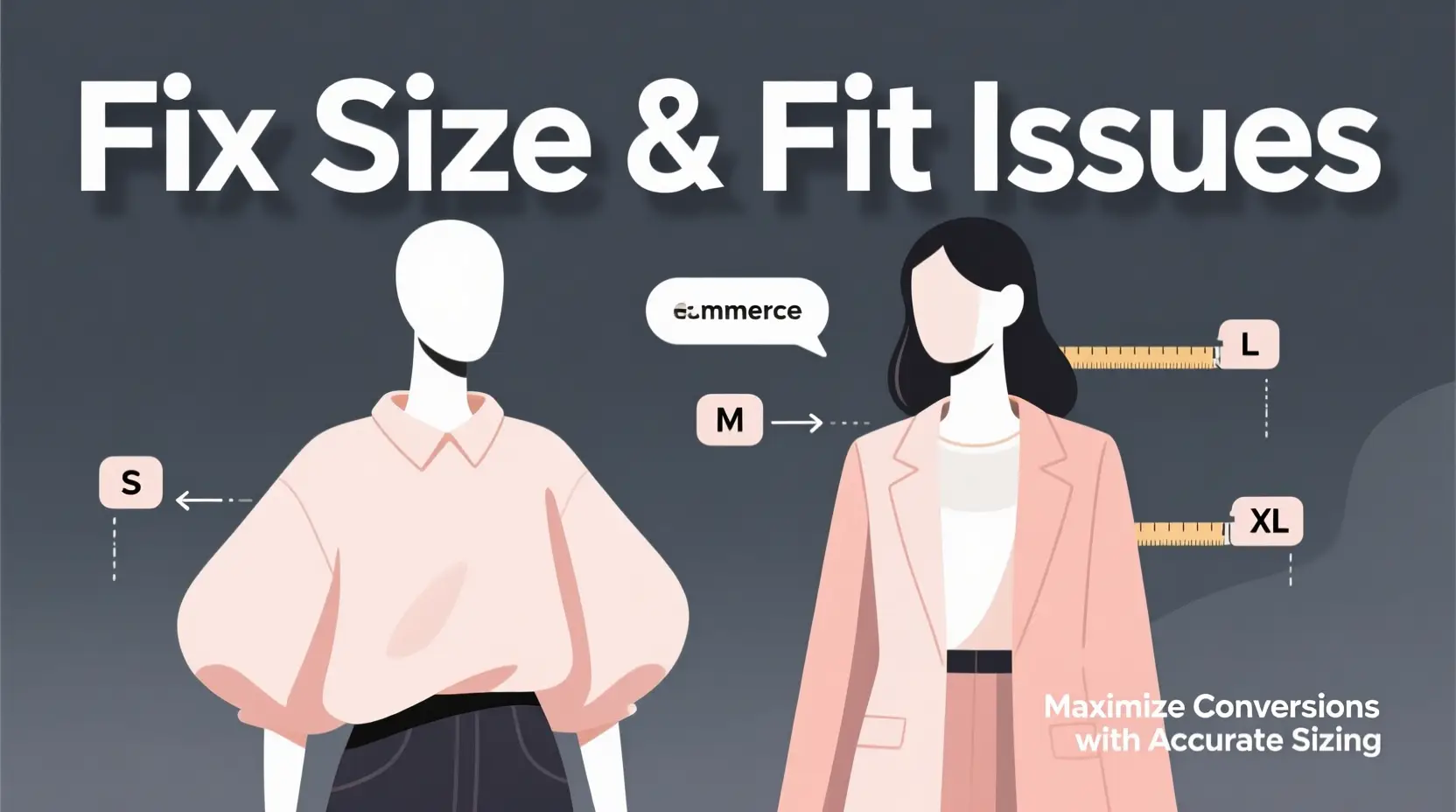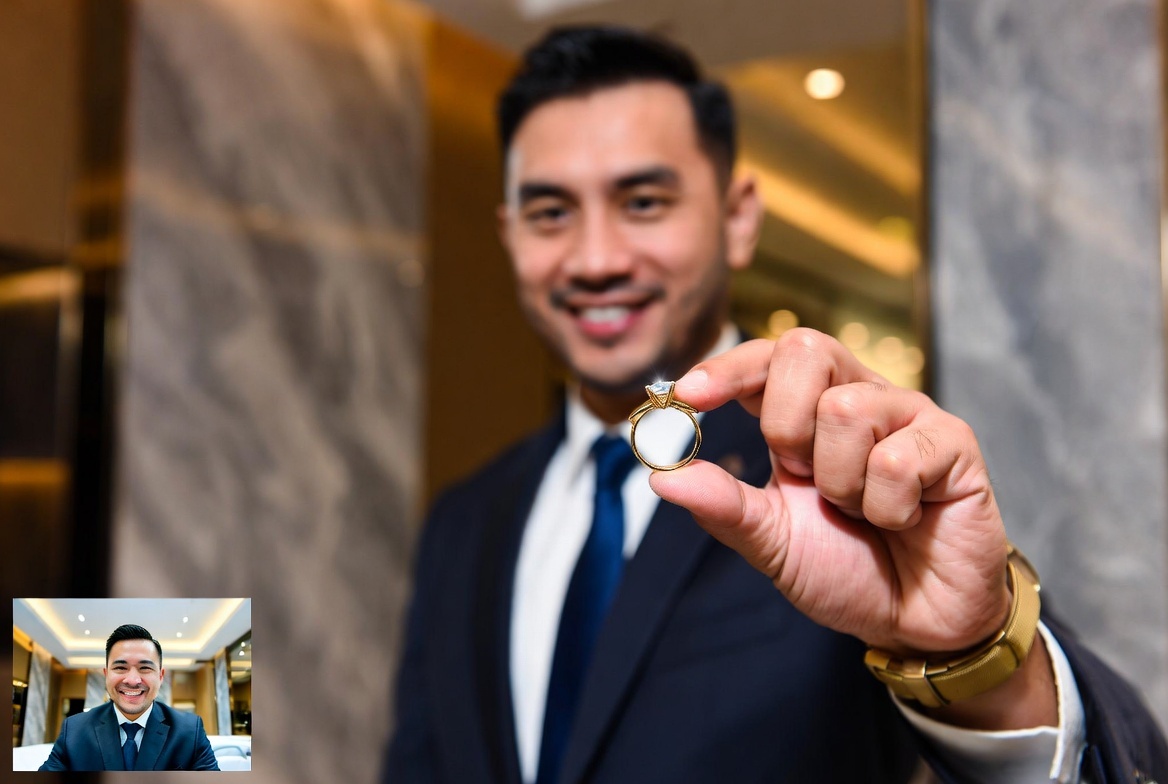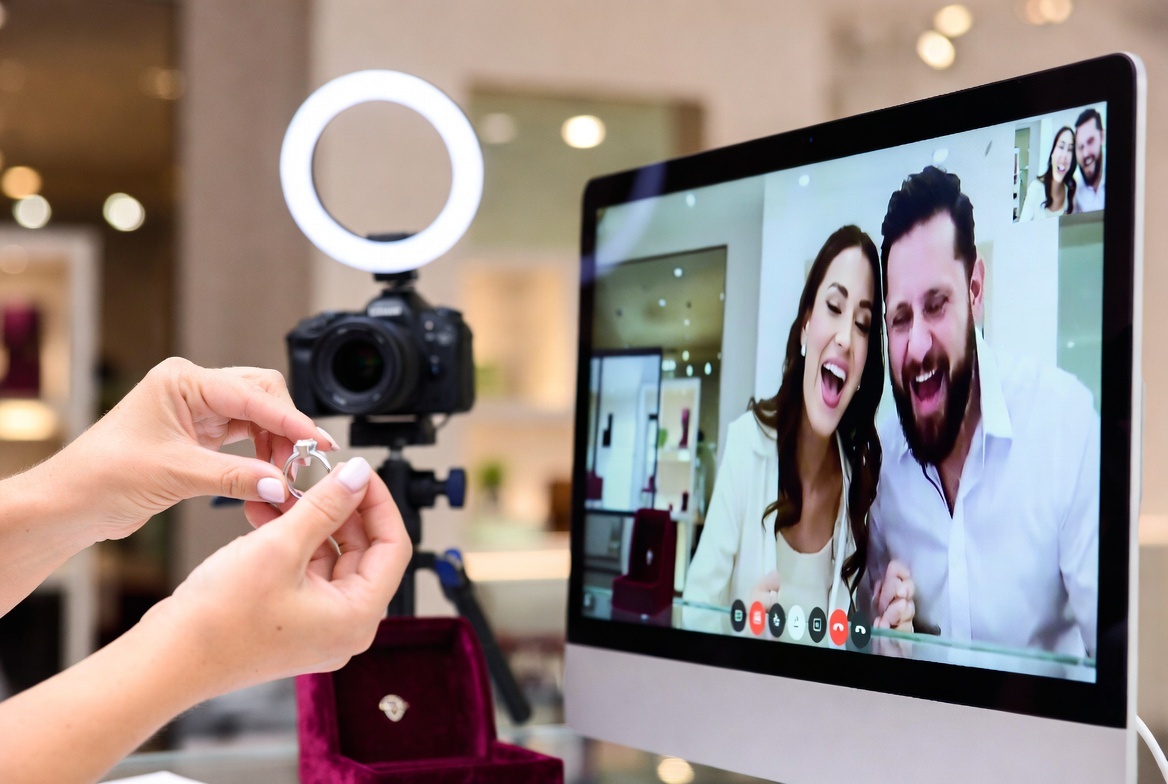The Hidden Revenue Killer: Why Fashion Brands with Good Traffic Struggle to Convert
A sustainable fashion brand recently achieved a 20% conversion rate increase and 22% boost in add-to-cart rates without spending a single additional dollar on advertising. The secret wasn’t better ads or more traffic—it was fixing fundamental conversion barriers that plague premium fashion e-commerce.
A detailed case study shared on r/ecommerce revealed how this brand transformed flatlined sales into consistent growth by addressing three critical issues: sizing uncertainty, navigation friction, and checkout trust barriers. The results demonstrate that for fashion brands, especially those selling premium products, conversion optimization often matters more than traffic acquisition.
This guide examines the specific challenges facing fashion e-commerce and provides actionable strategies to transform browsers into buyers. For fashion brands struggling with good traffic but poor conversions, the solution lies in understanding customer psychology and removing friction at every decision point.
Understanding Fashion E-commerce Conversion Fundamentals
The Premium Fashion Purchase Psychology
Fashion purchases, particularly in the premium segment, represent complex buying decisions that differ significantly from impulse purchases. Customers evaluate multiple factors simultaneously: fit, style, quality, price point, and brand alignment. This complexity creates numerous opportunities for doubt and hesitation.
Key psychological factors in fashion purchasing:
Risk Aversion: Higher-priced items increase perceived purchase risk, making customers more cautious about sizing, quality, and return policies.
Tactile Preference: Fashion shoppers traditionally prefer touching fabrics, feeling quality, and trying on items before purchasing.
Style Uncertainty: Customers need confidence that items will look good on their specific body type and integrate with their existing wardrobe.
Social Validation: Fashion choices reflect personal identity, making customers more sensitive to how others perceive their selections.
The Conversion Rate Challenge in Fashion
Fashion e-commerce faces unique conversion challenges compared to other retail categories:
Industry Benchmarks and Reality:
- Average fashion e-commerce conversion rate: 1.8-2.9%
- Premium fashion brands often see lower rates: 1.2-2.1%
- Best-in-class fashion sites achieve: 3.5-5.2%
- The gap represents millions in potential revenue for established brands
Primary Conversion Barriers:
- Sizing uncertainty: 64% of fashion returns are sizing-related
- Fit anxiety: 71% of customers hesitate due to fit concerns
- Quality questions: 58% want to feel fabric and construction quality
- Style confidence: 49% worry about how items will look on them
Step-by-Step Conversion Optimization for Fashion Brands
Phase 1: Addressing Size and Fit Confidence (Week 1-2)
Problem Identification: The case study brand noticed customers “freaking out over sizing” because “fits were expensive” and the site provided insufficient reassurance.
Strategic Solution Framework:
Visual Size Guide Enhancement Create comprehensive size guides that go beyond basic measurement charts:
- Body type-specific fit recommendations
- Model photos showing various sizes on different body types
- Fabric stretch and drape explanations
- Comparison photos between sizes for the same item
Prominent Size Information Architecture Restructure site navigation to make size and fit information immediately accessible:
- Dedicated “Size & Fit” section in main navigation
- Quick-access size guide links on product pages
- Size-specific filtering options in category pages
- Fit preference settings for returning customers
Interactive Fit Tools Implement tools that help customers choose appropriate sizes:
- Size recommendation quiz based on body measurements
- Fit prediction based on previous purchases
- Customer review integration highlighting fit feedback
- Virtual fit visualization when possible
Implementation Priority:
- Update main navigation within 48 hours
- Create enhanced size guides for top 20% of products
- Add size recommendation tools to high-traffic product pages
- Integrate customer fit reviews prominently
Phase 2: Navigation and Product Discovery Optimization (Week 3-4)
Problem Analysis: The original case highlighted that “navigation was a mess” and “discovering products was a chore,” requiring “five clicks instead of two” to find desired items.
Navigation Restructuring Strategy:
Streamlined Category Architecture Design intuitive product categorization that matches customer shopping behavior:
- Style-based categories (casual, formal, seasonal)
- Occasion-specific groupings (work, weekend, special events)
- Visual category tiles showing fabric, cut, and style examples
- Cross-category collections for complete outfit inspiration
Enhanced Product Filtering Create sophisticated filtering that helps customers narrow choices effectively:
- Visual filters (color swatches, pattern examples, silhouette illustrations)
- Fit preference filters (loose, fitted, stretch, structured)
- Lifestyle filters (low-maintenance, travel-friendly, versatile)
- Price range optimization for premium positioning
Improved Search Functionality Optimize search to understand fashion-specific queries:
- Style synonym recognition (“flowy” = “loose fit”)
- Occasion-based search (“interview outfit,” “date night”)
- Color and pattern matching
- Suggested completions for partial queries
Quick Access Features Reduce clicks required for common customer journeys:
- Recently viewed items prominently displayed
- Wishlist quick-add from category pages
- One-click access to size guides
- Rapid checkout for returning customers
Phase 3: Checkout Trust and Friction Elimination (Week 5-6)
Trust Barrier Analysis: The case study revealed “major trust issues” with “shipping costs” and “return policy” information being “buried,” creating unnecessary checkout friction.
Trust Element Optimization:
Above-the-Fold Trust Signals Position critical trust information prominently throughout the site:
- Clear return policy summary on product pages
- Shipping cost calculator before checkout
- Quality guarantees and craftsmanship promises
- Customer service contact information
Transparent Pricing Structure Eliminate surprise costs that cause cart abandonment:
- Upfront shipping cost display
- Tax calculation before checkout entry
- Clear pricing for expedited shipping options
- Total cost preview in shopping cart
Return Confidence Building Address the primary concern for premium fashion purchases:
- Generous return window prominently displayed
- Easy return process explanation
- Free return shipping policies
- Size exchange guarantees
Social Proof Integration Leverage customer validation to build purchase confidence:
- Customer photos wearing products
- Detailed fit and quality reviews
- Style inspiration from real customers
- Influencer and press validation
Phase 4: Advanced Conversion Enhancement (Week 7-8)
Personalization Implementation:
Customer Journey Customization Tailor experiences based on customer behavior and preferences:
- Returning customer recognition with size preferences
- Browsing history-based recommendations
- Abandoned cart recovery with targeted incentives
- Seasonal preference learning
Dynamic Content Optimization Adjust site content based on customer segments:
- First-time visitor education about brand quality
- Returning customer new arrival highlights
- Premium customer exclusive access
- Size-specific model photos based on customer profile
Best Practices for Fashion E-commerce Conversion
Design and User Experience Optimization
Visual Hierarchy for Fashion:
- High-quality product photography prioritized
- Minimal design that highlights product details
- Consistent styling across all product imagery
- Mobile-optimized visual elements
Loading Speed Considerations:
- Optimized high-resolution images without quality loss
- Progressive loading for multiple product photos
- Fast-loading size guides and fit tools
- Mobile performance optimization
Content Strategy for Fashion Brands
Product Description Framework:
- Style and fit details before technical specifications
- Fabric care and longevity information
- Styling suggestions and outfit inspiration
- Size model details and measurements
SEO Content Integration:
- Style guide blog content linked from product pages
- Seasonal trend articles driving product discovery
- Customer styling stories and testimonials
- Behind-the-scenes brand and quality content
Mobile-First Fashion Experience
Mobile Shopping Behavior:
- 67% of fashion shoppers browse on mobile devices
- 41% complete purchases on mobile
- Visual discovery preferred over text-heavy descriptions
- Quick decision-making tools essential
Mobile Optimization Priorities:
- Swipeable product image galleries
- Touch-friendly size selection
- Simplified checkout process
- One-click customer service access
Common Mistakes to Avoid in Fashion E-commerce
Sizing and Fit Pitfalls
Generic Size Charts: Using standard industry size charts without brand-specific fit information fails to address customer uncertainty about how items will fit their specific body type.
Hidden Size Information: Requiring multiple clicks to access size guides or burying fit information in product descriptions creates unnecessary friction during the decision-making process.
Inconsistent Sizing: Varying fit across different product lines without clear explanation leads to customer confusion and increased return rates.
Navigation and Discovery Errors
Complex Category Structures: Over-complicated navigation that requires deep menu exploration frustrates customers and increases bounce rates.
Poor Search Functionality: Search tools that don’t understand fashion terminology or style preferences make product discovery difficult.
Limited Filtering Options: Inadequate filtering capabilities force customers to browse through irrelevant products to find desired items.
Trust and Transparency Issues
Hidden Costs: Surprising customers with shipping fees, taxes, or handling charges at checkout creates negative experiences and cart abandonment.
Vague Return Policies: Unclear or difficult-to-find return information increases purchase anxiety, particularly for premium items.
Insufficient Product Information: Lack of detailed fabric, care, and construction information leaves customers uncertain about product quality and value.
Measuring Success and ROI in Fashion E-commerce
Key Performance Indicators
Primary Conversion Metrics:
- Overall conversion rate improvement
- Add-to-cart rate increases
- Category page engagement enhancement
- Checkout completion rate optimization
Customer Experience Indicators:
- Bounce rate reduction from product pages
- Time spent on size guide pages
- Customer service inquiry volume changes
- Return rate trends and reasons
Revenue Impact Measurements:
- Average order value changes
- Customer lifetime value improvements
- Repeat purchase rate increases
- Profit margin optimization through reduced returns
Advanced Analytics Implementation
Customer Journey Analysis:
- Funnel analysis identifying specific drop-off points
- Heat mapping of product page interactions
- A/B testing of size guide formats and placement
- Cohort analysis of customer behavior changes
Segmentation Insights:
- New vs. returning customer conversion patterns
- Mobile vs. desktop shopping behavior differences
- Geographic and demographic conversion variations
- Seasonal and trend-based purchasing patterns
Technology Solutions for Fashion E-commerce Enhancement
AI and Machine Learning Applications
Size Recommendation Engines: Modern fashion sites increasingly use AI to predict optimal sizes based on customer data, purchase history, and body measurements, reducing sizing uncertainty and return rates.
Visual Search Capabilities: Advanced visual search allows customers to upload photos and find similar styles, improving product discovery and reducing navigation friction.
Personalization Algorithms: Machine learning systems that adapt product recommendations, sizing suggestions, and content based on individual customer behavior and preferences.
Interactive Shopping Technologies
Virtual Try-On Solutions: Augmented reality and AI-powered virtual fitting tools help customers visualize how garments will look and fit, addressing tactile shopping preferences.
Live Shopping Integration: Real-time consultation capabilities that allow customers to connect with styling experts and receive personalized advice during the shopping process, particularly valuable for premium fashion brands.
3D Product Visualization: Advanced product imagery that allows customers to examine construction details, fabric texture, and fit from multiple angles, replicating in-store examination benefits.
Advanced Strategies for Premium Fashion Conversion
Exclusive Experience Creation
VIP Customer Programs:
- Early access to new collections
- Personal styling consultations
- Exclusive sizing and fit services
- Premium customer service channels
Limited Edition and Scarcity Marketing:
- Transparent inventory levels
- Waitlist options for out-of-stock items
- Pre-order capabilities for upcoming releases
- Exclusive colorways and styles for online customers
Community and Social Integration
Customer Styling Communities:
- User-generated content showcasing real customers
- Styling challenges and inspiration sharing
- Expert stylist advice and recommendations
- Social proof through customer photos and reviews
Influencer and Expert Partnerships:
- Collaboration with fashion influencers for authentic product demonstrations
- Expert stylist recommendations and outfit suggestions
- Celebrity and industry professional endorsements
- Behind-the-scenes content showing quality and craftsmanship
The Future of Fashion E-commerce Conversion
Emerging Technologies and Trends
Conversational Commerce Integration: The most innovative fashion brands are implementing conversational commerce solutions that provide real-time styling advice, size consultations, and product recommendations during the shopping process. This approach addresses the fundamental gap between online and in-store shopping experiences.
Sustainability and Transparency: Modern fashion consumers increasingly value sustainability information, ethical production details, and brand transparency, requiring new approaches to product information and brand storytelling.
Omnichannel Experience Evolution: Seamless integration between online and offline experiences, including virtual consultations with in-store stylists, online appointment booking for fitting sessions, and unified customer profiles across all touchpoints.
Predictive Shopping Experiences
Anticipatory Customer Service: Advanced analytics that predict customer needs and proactively address concerns before they become conversion barriers, including personalized size recommendations, style suggestions, and timing optimization.
Dynamic Pricing and Personalization: Real-time adjustments to product presentation, pricing strategies, and promotional offers based on individual customer behavior, purchase history, and engagement patterns.
Conclusion: Transforming Fashion E-commerce Performance
The sustainable fashion brand case study demonstrates that significant conversion improvements are achievable through systematic optimization of customer experience fundamentals. By addressing sizing uncertainty, navigation friction, and trust barriers, fashion brands can unlock substantial revenue growth from existing traffic.
The key insight is that premium fashion customers require higher levels of confidence and assurance before making purchasing decisions. Unlike impulse purchases, fashion buying involves complex evaluations of fit, style, quality, and value. Successful fashion e-commerce optimization focuses on reducing uncertainty and building confidence at every customer touchpoint.
Implementation should follow a systematic approach: first addressing fundamental trust and confidence issues, then optimizing navigation and discovery, and finally implementing advanced personalization and conversion enhancement strategies. Each phase builds upon previous improvements to create compounding benefits.
For fashion brands ready to move beyond traffic acquisition to conversion optimization, the opportunity is substantial. Industry leaders are achieving 3-5% conversion rates while most fashion sites struggle to exceed 2%. The difference lies in understanding customer psychology and systematically removing barriers to purchase confidence.
The technology and strategies exist today to implement these improvements quickly and cost-effectively. The question is how rapidly fashion brands can optimize their conversion funnels before competitors gain insurmountable advantages through superior customer experiences.
Book Your Live Demo to discover how Immerss conversational commerce platform can help your fashion brand address sizing uncertainty, provide real-time styling advice, and transform browsers into confident buyers through personalized shopping experiences.



